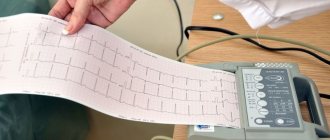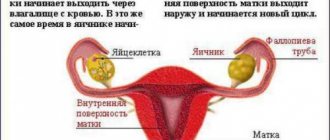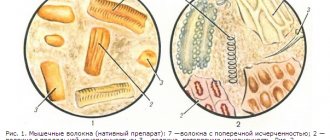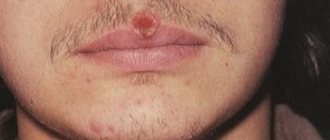Nystagmus is the name given to rapid, repetitive eye movements that occur regardless of a person’s conscious commands. A similar condition sometimes occurs normally if a person has to watch a rapidly moving object, cold water gets into his ear, or his body rotates in space (for example, on a carousel). Some diseases of the nervous system, eye or inner ear can also lead to the appearance of this symptom. The pathology is very easy to diagnose, but it is difficult to treat.
The mechanism for the development of nystagmus is a violation of a peripheral organ (eyeball, nerves of the extraocular muscles, labyrinth in the peripheral part of the vestibular apparatus and the nerve coming from it), or the brain.
The long-term existence of nystagmus, even when it appears as a result of damage to the central nervous system and vestibular apparatus, leads to an inevitable decrease in visual acuity, since the brain does not receive normal images of objects from the eyes.
Causes
Nystagmus is usually divided into congenital and acquired:
Congenital pathology is quite rare. It is inherited or occurs as a result of birth injuries and intrauterine infections, giving impetus to the development of incomplete atrophy of the optic nerve, strabismus, retinal dystrophy, farsightedness, astigmatism, and myopia.
Acquired nystagmus can develop due to:
- Multiple sclerosis.
- Tumors in the brain.
- Brain contusion.
- Inflammation of the inner ear.
- Encephalitis.
- Temporal bone cracks.
- Stroke.
- Tumors of the nerve that carries information from the vestibular and auditory analyzers (vestibular-cochlear).
- Exposure to drugs and certain toxins.
- Taking a number of medications (lithium compounds, carbamazepine, barbiturates).
- Some ophthalmological diseases.
Pendulum-like eye movements often cause damage to the brain, namely: the cerebellum, brain stem, pons, midbrain, sella turcica, pituitary gland, rhomboid fossa, medulla oblongata.
At the same time, the direction of involuntary eye movement may indicate the localization of the lesion:
- With horizontal movements, as a rule, the inner ear or middle sections in the rhombencephalon are affected.
- With vertical or diagonal movements, the problem lies in the area of the upper sections in the diamond-shaped fossa.
- During rotational movements, the lower parts of the rhombencephalon are often affected.
- With converging movements, we are talking about pathologies of the midbrain.
When diagnosing, to more accurately determine the level of damage, the neurologist must also evaluate the speed of eyeball movements and their amplitude.
Trembling of the eyeball
Nystagmus is fairly easy to detect. It manifests itself in involuntary movements of the eyeballs in different directions. How to deal with such a pathology? The specifics of treatment for eye tremors primarily depend on the reasons that caused such a symptom. There are simply no targeted drugs that eliminate nystagmus.
Ocular nystagmus can be treated conservatively with the following medications:
- improving visual acuity;
- reducing intraocular pressure;
- normalizing metabolic processes in the eye.
In the case of pathology of the inner ear, anti-inflammatory therapy is required, metabolic - depending on the reasons that caused this pathological condition. If the trembling of the eyeball is caused by diseases of the nervous system, then only an experienced neurologist can find ways to solve this problem.
Types of nystagmus
According to the direction of oscillatory eye movements, the disease is divided into:
- Vertical nystagmus, if the eye moves up and down (vertically);
- Horizontal nystagmus, when movements occur along a horizontal axis;
- Rotatory nystagmus, with rotational movements around the sagittal axis;
- Convergent nystagmus, in which there is rapid movement of the eyes towards each other;
- Diagonal nystagmus - movement along a diagonal.
The direction in which the nystagmus is directed must be judged by its rapid phase.
If the eye movements are of the same type, the nystagmus is called associated, if different - dissociated.
Nystagmus is also distinguished by the location of the lesion:
1. Vestibular. Its causes are due to pathologies of the part of the brain that receives information from the vestibular apparatus, as well as a disease of the labyrinth itself (peripheral vestibular apparatus). Such nystagmus can be caused by rotation of the body, as well as a caloric test (pour cold or warm water of a certain temperature into the ear). It can also occur spontaneously, accompanied by nausea and dizziness. 2. Central. Such nystagmus develops with traumatic, dystrophic, tumor or inflammatory lesions of the cerebellum, structures in the posterior cranial fossa, subcortical and cortical centers for the regulation of eye movements.
There are also other classifications.
Surgery to eliminate nystagmus
Correction of nystagmus in the punctate form of this pathology consists of weakening the strong muscle on the side of the strong phase and strengthening the weak muscle on the side of the weak phase. This fixes the middle position of the relative rest of the eyes:
Operation stages:
- Bilateral symmetrical intervention (recession) on the muscles responsible for the slow phase.
- With a sharp decrease in nystagmus, the second stage is not carried out. If there is no effect, bilateral symmetrical intervention (recession) is performed on the muscles responsible for the fast phase.
When nystagmus is combined with strabismus, a smaller resection is performed on the side of the deviation, and a larger resection is performed on the side opposite to the deviation. The use of laser and radiotherapy methods allows for maximum preservation of the nerve endings and blood vessels of the eyes. After surgery, it is necessary to consolidate the results using conservative therapy methods.
According to medical statistics, successful rehabilitation is guaranteed in 78% of cases of surgical intervention. The patient gets the opportunity to have an even gaze with a confident fixation on the object, high visual acuity without the use of glasses, and the ability to perceive 3D format.
Symptoms of nystagmus
Nystagmus is characterized by movements of the eyeball that occur spontaneously or after some provocation. Movements are pendulum-like (back and forth) and last the same amount of time in the horizontal and vertical planes or diagonally. If the eye moves faster in one direction than in the other, then such nystagmus is defined as jerky.
There is also a mixed type, in which when a person looks forward, pendulum-like movements occur, but when looking in any direction, jerky movements occur.
Classification
Types of vertical nystagmus:
- Infantile. Most often develops between 2 and 3 months of age. Associated with other conditions such as albinism, congenital absence of the iris (the colored part of the eye), underdeveloped optic nerves, and congenital cataracts.
- Drooping. Usually occurs between 6 months and 3 years. Children with this form of nystagmus often nod and tilt their heads. Their eyes can move in any direction. This type of nystagmus usually does not require treatment.
- Acquired. Develops later in childhood or adulthood. The cause is often unknown, but it may be due to central nervous system and metabolic disorders, alcohol toxicity, drug toxicity.
Based on the type of shocks, a distinction is made between pendulum-like and jerk-like. The first is characterized by sinusoidal oscillations, the second - by alternating a slow phase and a corrective fast one.
There is another classification for neurological patients. There are labyrinthine-vestibular, periodically alternating and dissociated VN.
Nystagmus in children
Nystagmus in children has its significant differences:
1. The likelihood of a child having the disease exists if the baby does not fix his gaze by the 4th week of life. This type of pathology is congenital in nature and is caused by the influence of unfavorable factors on the child’s brain during the prenatal period of development or a genetic disorder of the innervation of the extraocular muscles. This condition has the following characteristics:
- Appears by 2-3 months, persisting for life;
- Not visible during sleep;
- It has a jerky character and a horizontal orientation;
- There is a direction of gaze in which nystagmus does not appear.
2. Early acquired nystagmus is caused by pathology of both eyes, which reduces central vision. In terms of symptoms, it is similar to congenital, but appears a little later. In this case, the child notices eye twitching and this greatly bothers him. 3. Nodule spasm is a pathological condition that accompanies nystagmus, which develops by 3-18 months. It may be of unknown nature (and disappears by the age of 3 years), and is often caused by some pathology (including tumors) of the brain or cranial nerves. In this case, nystagmus has a small amplitude, high frequency and develops in the horizontal plane (sometimes with vertical components), accompanied by nodding of the head. 4. Hidden, latent nystagmus, develops due to infantile strabismus, occurs without paresis of upward or downward gaze. Such nystagmus is absent with open eyes, but appears when the intensity of illumination of one eye decreases and has a horizontal direction. 5. Infantile nystagmus is often observed with albinism, a genetic disease characterized by the absence of pigment in the iris. Involuntary eye movements in children can also be caused by post-traumatic encephalopathy or be the first signs of Meniere's disease.
In what cases should you consult a doctor?
If such symptoms are permanent and haunt a person for more than three days, this is a sure sign of the need to see a doctor. It would seem that such an innocent symptom as a trembling eyelid cannot portend trouble, but this is not so. Tremor can signal a huge number of diseases occurring in the body. As you know, the earlier the disease is diagnosed, the easier it is to cope with it. You need to be attentive to your health and seek medical help in a timely manner. Otherwise, there is a high probability of complications and a long course of treatment.
You can make an appointment for diagnostics at the Yusupov Hospital by phone. A visit to the doctor will be agreed upon at any time convenient for you.
Treatment of nystagmus
Treatment for the condition depends on the type of pathology detected:
- Inflammation of the labyrinth or eye requires conservative treatment of these diseases;
- For albinism, wearing sunglasses or pierced glasses and tinted contact lenses is prescribed;
- In some cases, vision correction by surgical methods is required;
- Surgical removal of a brain tumor;
- Medications are prescribed to improve the nutrition of the retina and other structures of the organ of vision (vitamin complexes, vasodilators, drugs that reduce blood viscosity).
In the medical department, everyone can undergo examination using the most modern diagnostic equipment, and based on the results, receive advice from a highly qualified specialist. The clinic is open seven days a week and operates daily from 9 a.m. to 9 p.m. Our specialists will help identify the cause of vision loss and provide competent treatment for identified pathologies.
You can find out the cost of a particular procedure or make an appointment at the Moscow Eye Clinic by calling 8 8 (499) 322-36-36 (daily from 9:00 to 21:00) or using the online registration form.
Trembling eyelids
At first, eyelid twitching seems like a funny phenomenon to many. But over time it ceases to be funny and causes considerable discomfort. A person has a question: what is the reason for this phenomenon and how to get rid of it?
Trembling eyelids is a kind of nervous tic, which serves as a manifestation of many psychological disorders. This symptom is a harbinger of the occurrence of various diseases.
Trembling eyelids can occur when:
- meningitis and complications associated with them;
- head injuries;
- concussion;
- postpartum trauma or weakness;
- increased intracranial pressure;
- disturbances of normal blood circulation in the brain;
- the presence of a tumor affecting the facial nerve;
- lack of vitamins, leading to conduction disturbances in the nerve endings of tissues.
Trembling eyelids indicate serious disorders in the body. To establish the true cause of the malaise, it is necessary to undergo an examination.
At the Yusupov Hospital you can undergo a complete diagnosis. All procedures are carried out using modern medical equipment, which allows us to obtain the most informative and reliable results.
If you experience a one-time eyelid tremor, there is most likely nothing to worry about. This symptom may occur due to overwork or stress. In cases where eyelid tremor does not go away within three days, you should seek help from a neurologist. This problem may indicate serious psycho-emotional disorders, which only an experienced specialist can help cope with.
The Yusupov Hospital employs the country's leading specialists who will quickly help the patient overcome a psychological problem of any nature. In the absence of therapy, the patient may develop various conditions that are difficult to treat. Unresolved emotional problems in the future affect the functioning of the whole organism. To avoid complications, it is important to seek help from specialists in a timely manner.
Diagnostics
The first step is a complete physical examination. Diagnosis is made based on an ophthalmological examination, which includes:
- visometry;
- biomicroscopy;
- perimetry;
- ophthalmoscopy.
Using diagnostic tests, the ophthalmologist looks for the cause of the disorder. If necessary, a head CT and MRI are performed.
The doctor orders vestibular testing:
- videonystagmography or electronystagmography;
- computer dynamic posturography.
Using information obtained after diagnosis, the doctor determines whether the patient has vertical nystagmus and advises treatment options.










